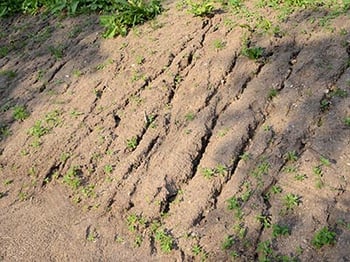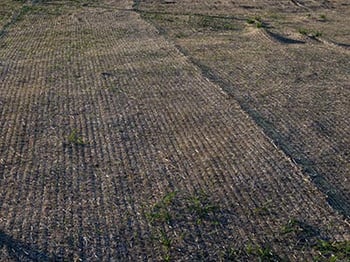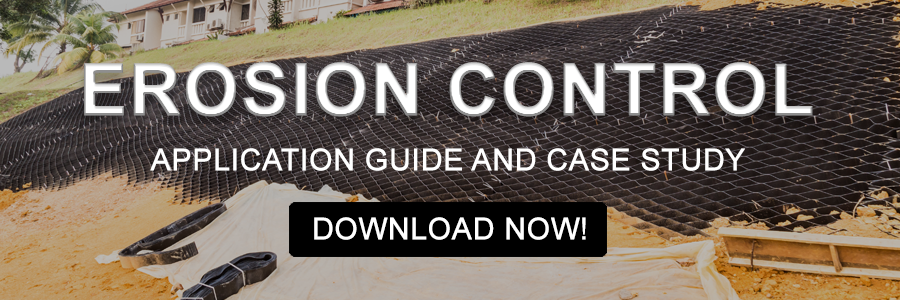A Glance at Applications and Effective Use of Erosion Control Blankets
- Home
- Team EJP Blog
- A Glance at Applications and Effective Use of Erosion Control Blankets
- Sep 5, 2018 3:33:06 PM
- Everett J. Prescott
Erosion is a serious issue. It robs the soil of nutrients and causes it to detach and run off. It can clog waterways, killing aquatic life. As our society has become more strongly focused on sustainability, erosion has become a more important issue. One great option to consider when trying to control runoff and erosion in a new project or problem area is erosion control blankets. Available with a wide range of longevity, they provide a solid structure that limits erosion without a high cost or environmental impact. Here's a quick look at these materials, what applications they work well in and how to use them effectively.

Created from biodegradable materials, erosion control blankets are a temporary product that has been developed to provide protection to newly-seeded areas during the process of restoring vegetation to a project site. Designed to be installed after the seed bed has already been prepared and seeded, the blanket material will biodegrade while the vegetation becomes established.
The erosion control blankets are typically manufactured by attaching an evenly-distributed layer of mulch to a netting structure, including materials such as coconut fiber, wood fiber and straw. Unlike standard mulches or scattering straw, the integrated structure of the entire blanket helps keep individual portions of the blanket from being carried away during heavy rains.
Generally speaking, erosion control blankets are a good option for slopes or even low-velocity waterways. They help hold the soil in place and avoid issues with detachment of the soil caused by raindrops striking the surface, as the rain strikes the surface of the blanket instead. At the same time, the rainwater is able to absorb into the soil, reducing the need for irrigation at newly-established sites. As the plants begin to establish, they will grow through the blanket, which will begin to deteriorate.

How long the blanket will last depends strongly on the materials used. The netting and fibers have different levels of longevity that must be matched to the job site conditions and requirements. Though the real-life longevity is dependent on a number of other aspects, such as rainfall, soil acidity and similar factors, erosion control blankets can be purchased that will provide soil protection from anywhere between 45 days to three years.
For successful erosion control, these blankets are typically rolled out onto the surface of the soil after planting and staked down at regular intervals, depending on the installation instructions. This helps prevent any shifting of the blanket during especially heavy rainfall. Installations should be inspected at a minimum of once a week, or within two full days of heavy rain until the vegetation has had a chance to become well established.
Erosion control blankets can be used in a range of situations, allowing vegetation to re-establish itself following a project, even on relatively fragile soils. Blankets can be an effective tool in the fight against erosion. But what if you're not quite sure whether that's the right solution for your next project? The professionals at Team EJP are ready to help. Please feel free to reach out today to learn more about your water utility's erosion control options.








